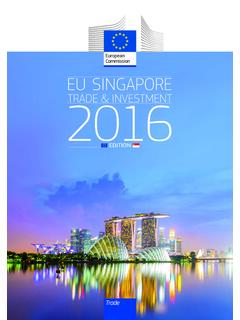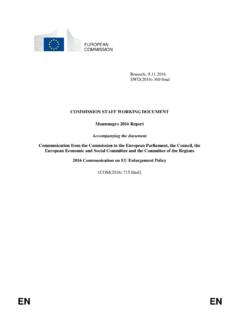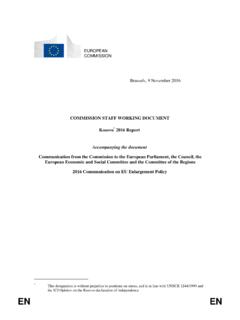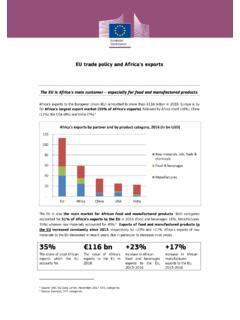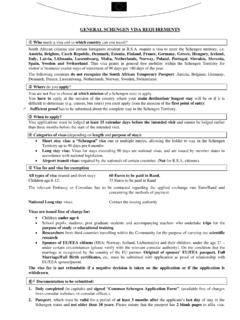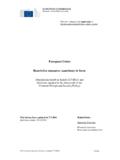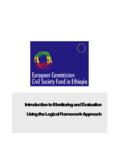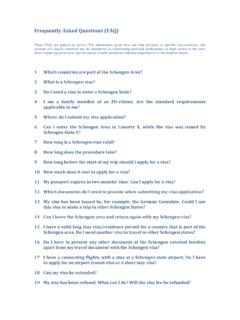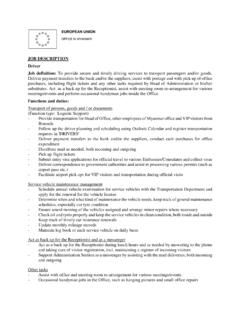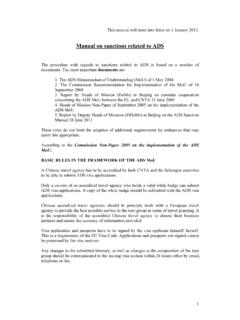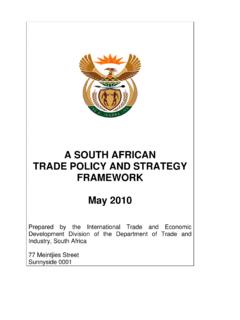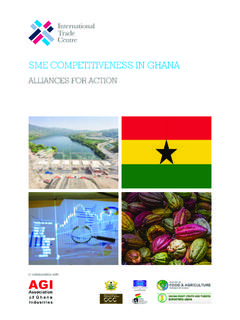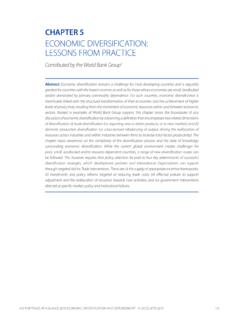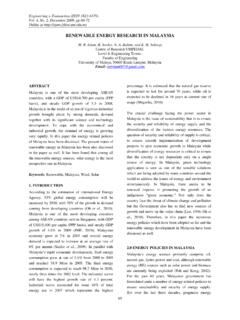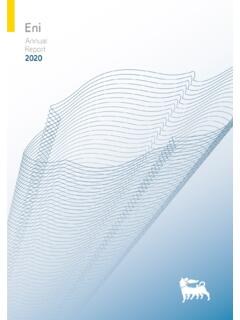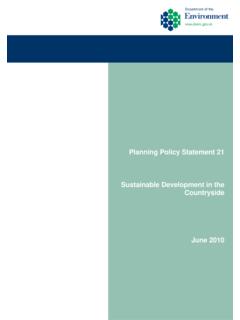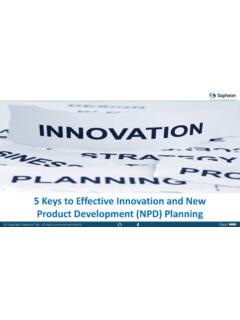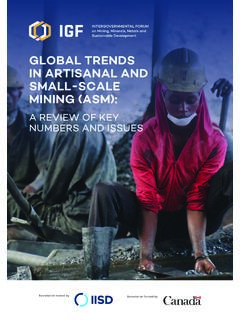Transcription of JOINT STAFF WORKING DOCUMENT Recovery, resilience and ...
1 EN EN EUROPEAN COMMISSION HIGH REPRESENTATIVE OF THE UNION FOR FOREIGN AFFAIRS AND SECURITY POLICY Brussels, SWD(2021) 186 final JOINT STAFF WORKING DOCUMENT Recovery, resilience and reform: post 2020 Eastern Partnership priorities 1 RECOVERY, resilience AND REFORM: POST 2020 EASTERN PARTNERSHIP PRIORITIES 1. INTRODUCTION The Eastern Partnership (EaP) is a JOINT initiative launched in 2009 by the European Union, its Member States and Armenia, Azerbaijan, Belarus1, Georgia, the Republic of Moldova2, and Ukraine ( the partner countries ). It is strategic and ambitious, based on common values and rules, mutual interests and commitments, shared ownership and responsibility. It has brought the EU and partner countries closer together, and proven to be transformational. The EaP policy will continue to be flexible allowing for substantial differentiation, tailor-made approaches and incentive-based enhanced cooperation that benefits the countries most engaged in reforms.
2 Through its ambitious 20 deliverables for 2020 reform agenda the EaP has delivered tangible results on the ground and improved people s lives. The final overview report3 on the implementation of the agenda shows good progress, in particular in areas relating to the economy, digital and stronger societies, with continuing challenges as regards justice, anti-corruption as well as environmental protection and climate action. Work on a successor agenda began in 2019 with a broad and inclusive consultation. The resulting JOINT Communication Eastern Partnership Policy beyond 2020: Reinforcing resilience an Eastern Partnership that delivers for all4 (March 2020) and Council Conclusions of May 20205 set out a new vision for the partnership. It identified strengthening resilience as an overarching policy framework, with five long-term objectives: i) together for resilient, sustainable and integrated economies; ii) together for accountable institutions, the rule of law and security; iii) together towards environmental and climate resilience ; iv) together for a resilient digital transformation; and v) together for resilient, fair and inclusive societies.
3 These objectives, as acknowledged at the EaP Leaders videoconference held in June 2020, form a solid basis for a JOINT agenda focusing on recovery, resilience and reform. This is all the more important in view of the devastating impact of the COVID-19 pandemic on economies, societies and people. With the overall objective of strengthening resilience and generating concrete benefits to the people, the new agenda will be structured around two pillars: (i) investment, to be supported by an economic and investment plan6 and (ii) governance. These will be supported through the EU s various tools and modalities, including the new Neighbourhood, Development and International Cooperation Instrument (NDICI)-Global Europe instrument and the Team Europe initiatives, cross-border cooperation programmes and the 1 With regard to the participation of Belarus, and in line with the Council Conclusions of 12 October 2020, the EU will focus on intensifying cooperation with non-state stakeholders, including notably civil society, independent media and youth.
4 2 Hereinafter Moldova . 3 See Annex 3. 4 JOIN(2020) 7 final. 5 Council of the European Union, Council Conclusions on Eastern Partnership policy beyond 2020, 11 May 2020, 7510/1/20. 6 See Annex 1. 2 partners own investments. To support socio- economic recovery following the pandemic, investing in competitive and sustainable economies and connectivity will be an immediate priority. To strengthen longer-term resilience , EU and partner countries JOINT investments will be forward-looking and founded on the build back better agenda and do no significant harm to environment and climate principle. Inspired by the European Green Deal7 this is a historic opportunity to fast-track the twin green and digital transition with a whole of economy approach, decouple economic growth from resource use and environmental degradation and pursue the aim of reaching climate neutrality by 2050.
5 This will offer multiple opportunities of growth and jobs and will increase Eastern Partners competitiveness in the growing global markets for sustainable and green technologies. The economic and investment plan8 will support post-pandemic recovery using specific EU tools, including blending and guarantees, to foster sustainable development and leverage public and private investment. The plan contains a set of flagship initiatives for each of the partner countries. These are concrete priority projects with tangible results that have been jointly identified with the partner countries, taking into account their priorities, needs and ambitions. To underpin and sustain our investments and help consolidate resilient and fair societies that leave no-one behind, sustained engagement on good governance, justice and the rule of law, security are essential prerequisite and key priorities Continued delivery on the reform agenda, alongside respect for shared fundamental values, are the foundations of the partnership.
6 The new agenda was shaped in an inclusive dialogue with the partner countries, EU Member States and other stakeholders. As part of a comprehensive agenda of JOINT commitments a selection of Top Ten Targets9 has been identified. Together with the flagship initiatives, these will contribute to maximising impact and visibility on the ground. They complement additional commitments taken by the partner countries and the EU, also in other regional formats10. The EaP architecture will be adapted to reflect the new policy framework11. In line with the EU s third gender action plan, gender equality will be mainstreamed in all key priorities. In line with the new EU strategy on adaptation to climate change12, anticipatory and preventive climate resilience and preparedness will also be mainstreamed.
7 2. PROPOSED POST-2020 PRIORITIES Together for resilient, sustainable and integrated economies Trade and economic integration To deepen economic and trade integration, and further increase EU/EaP trade, the partner countries (together with the EU and its Member States) will: strengthen the business environment and facilitate trade and investment while ensuring a level playing field, in order to diversify exports including with less carbon intensive products 7 COM(2019) 640 final. 8 See Annex 1. 9 See diagram at end of Section 3. 10 Such as the Black Sea Synergy, when referring to actions related to the Black Sea basin. 11 See Annex 2. 12 COM(2021) 82 final. 3 and services, and increase trade between EU and partner countries at a rate exceeding total world trade growth .
8 Accelerate implementation of the deep and comprehensive trade areas (DCFTAs) with Georgia, Moldova an Ukraine, the Armenia-EU comprehensive and enhanced partnership agreement (CEPA) and other trade arrangements in order inter alia to ensure better access to the EU internal market, focusing in particular on regulatory approximation in the areas of public procurement, technical barriers to trade, sanitary and phytosanitary measures, customs and services; work to establish a system that allows preferential proofs of origin to be issued and/or submitted electronically with Georgia, Moldova and Ukraine; conclude mutual recognition agreements of authorised economic operator programmes between the EU and interested partner countries; work towards interested partner countries accession to the Common Transit Convention and use of the single administrative DOCUMENT ; promote good governance in taxation, in particular transparency and exchange of information, and fair taxation; and take the necessary steps to enable partner countries to join the Single European Payment Area, which would facilitate cross-border euro transfers and support a stronger international role for the euro.
9 Investment and access to finance Access to finance, in particular in local currencies, is key for small and medium enterprises (SMEs) looking to invest in their future and finance their growth plans. In partnership with international financial institutions (IFIs), the EU will provide at least 1 billion of local currency financing for SMEs, and support 500 000 SMEs (20% of all SMEs in the region). It will also develop a specific programme for women in business. Top Ten Target: 500 000 SMEs (20% of all SMEs in the region) supported In addition, the partner countries (together with the EU and its Member States) will: invest 500 million of equity to help SMEs, strengthen the start-up ecosystem, sustain economic development, promote women s entrepreneurship, create quality jobs, and pursue the green and digital transition; the new European Innovation Council will help to develop and scale up game changing innovations; support structural reforms and reduce corruption; strengthen engagement outside capital cities and unleash the economic potential of rural and coastal areas, including by investing in the sustainable food sector, easing agricultural lending and supporting diversification of activities, promoting more efficient use of resources, limiting emissions.
10 And develop a portfolio investment approach for at least 50 municipalities, to respond better to complexity, adapt to uncertainty and the consequences of climate change, and improve resilience and well-being. 4 Enhanced transport interconnectivity In line with its strategy on sustainable and smart mobility13, the EU will support sustainable , rules-based and secure transport connectivity with the partner countries covering road, rail, air, maritime and waterborne transport. Investments by the EU, partner countries and IFIs in the priority projects outlined in the indicative trans-European networks for transport (TEN-T) investment action plan will support the completion of the extended indicative core TEN-T network by 2030. Over 3 000 km of priority TEN-T roads and railways will be built or upgraded by 2025 in line with EU standards with a focus on EU-Eastern Partners trade corridors (including across the Black Sea) and in a way that is climate-proof and limits environmental damage.
